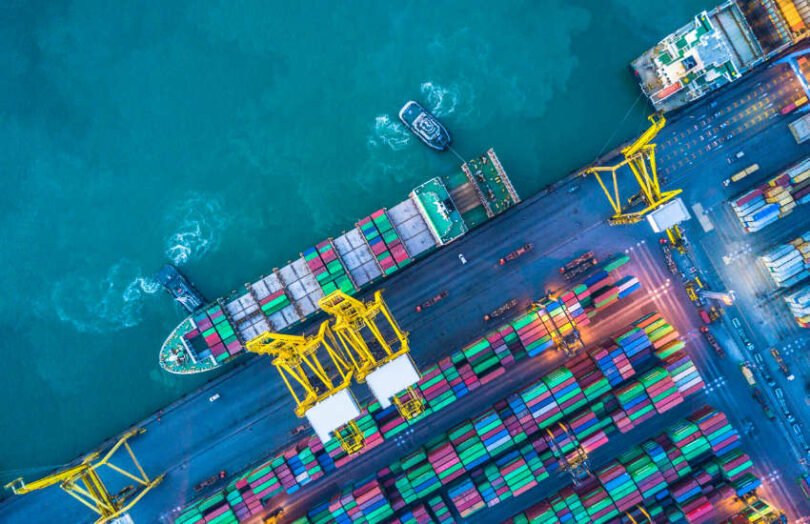Bills of lading are a foundational document representing ownership of cargo in transit and are widely used in trade finance. A couple of weeks ago the Global Shipping Business Network (GSBN) published a groundbreaking study assessing the environmental impact of digitizing bills of lading. It commissioned consultancy SIA, which assessed that every electronic bill of lading could save 27.9 kg of greenhouse gas emissions. Extrapolating that figure over the industry’s 15.8 million paper bills yields a potential CO2 emissions saving of 440,820 metric tons per year.
Separate calculations were performed for electronic delivery orders (eDO) used in GSBN’s cargo release application, which can save around 16.9 kg per shipment. GSBN applied the figures to the 120,000 electronic bills of lading (eBLs) its DLT network supported in 2023, plus the one million usages of its cargo release application, giving a CO2e reduction of 20,428 metric tons.
We didn’t immediately publish the news because we wanted to fact check the research, so there was some back-and-forth about the data. We only explored the bills of lading and concluded the figures are on the high side, but not outrageously so. Our rough figure using generous average mileage came to 16.2kg per bill of lading versus 27.9kg from the study.
However, the study’s foundations are solid, and the workings were shared for transparency. Critiquing the work from an armchair is easier than creating necessary research from a clean sheet. The report also included caveats that results depend on the specific examples used.
We arrived at the above figures after revising them upwards to use the study’s example of a Shanghai to Rotterdam shipment as an average.
eBLs and the urgency of digitization
The shipping industry has been slow to adopt electronic bills of lading (eBLs), most of which use DLT. Part of the reason has been poor interoperability, but inertia is a major factor. While the container shipping industry has committed to fully digitizing in ten years, research such as this could provide an additional motivation to accelerate that. Even if one applied half the emissions savings, it’s still worthwhile digitizing.
“As the shipping industry sails towards a greener horizon, the journey to net zero is not just about cleaner fuels but also about transforming the very fabric of trade through digitisation,” said Alicia Lee, COO at GSBN. “Paper-laden processes are not only inefficient and insecure for modern trade but are underpinned by carbon-intensive land and air logistics.”
Digging into the carbon emission details
Ms Lee alluded to the crux of the calculations. One copy of the paper bill of lading has to be couriered from the port of loading (POL) to the port of delivery (POD). This involves couriers by road and air. The bulk of the emissions savings are from the road courier at the loading and destination cities.
Because a paper bill weighs so little, the air courier accounts for only around 1% of the emissions, or around 0.27kg of savings, even for a 9,000 km flight from Shanghai to Rotterdam. Other costs, like paper, printing, etc., account for an even smaller amount.
SIA used quite long road distances, which is not unreasonable given that it represented a real shipment from Shanghai to Rotterdam. This was used for the average. Using the long road distance and allowing for a generous 5% uplift for other costs (air courier, extra bill copies, paper, etc), our figure came to 16.2kg per bill of lading versus 27.9kg. Even our calculation is on the high side.
Road couriers account for the emissions
Given that the emissions figures were from the Agency for Ecological Transition (ADEME), the only numbers that really matter are the distances the road couriers travel.
Distances for a Shanghai – Rotterdam shipment:
- Carrier (POL) to shipper (cargo sender) 107 km
- Shipper to airport 46km
- Destination airport to consignee (cargo recipient) 24km
- Consignee to carrier (POD) 33km
This gives a total of 210 km in road travel.
Road courier emissions are 0.0736 kg of CO2 per passenger km per ADEME. That gives 15.46kg of CO2 for a 210km trip. With a generous 5% uplift for other emissions, the total savings are around 16.2 kg. As you’d expect, SIA was far more precise than us and measured all the small emissions as well. However, 5% more than covers all those items and then some.
There are three copies of the paper bill of lading, but we do not believe the extra copies account for the discrepancies in the calculations. We already described the main copy. A second copy travels by ship with the cargo, so the emissions are very low as it’s based on weight. The other copy goes from the carrier to the shipper, who keeps it. The shipper also receives the first bill of lading simultaneously, so we did not double-count this trip in our calculations. The emissions relating to the copies easily fall within the 5% uplift we added.
While the figures appear high, GSBN and SIA deserve credit for conducting and sharing the research.






